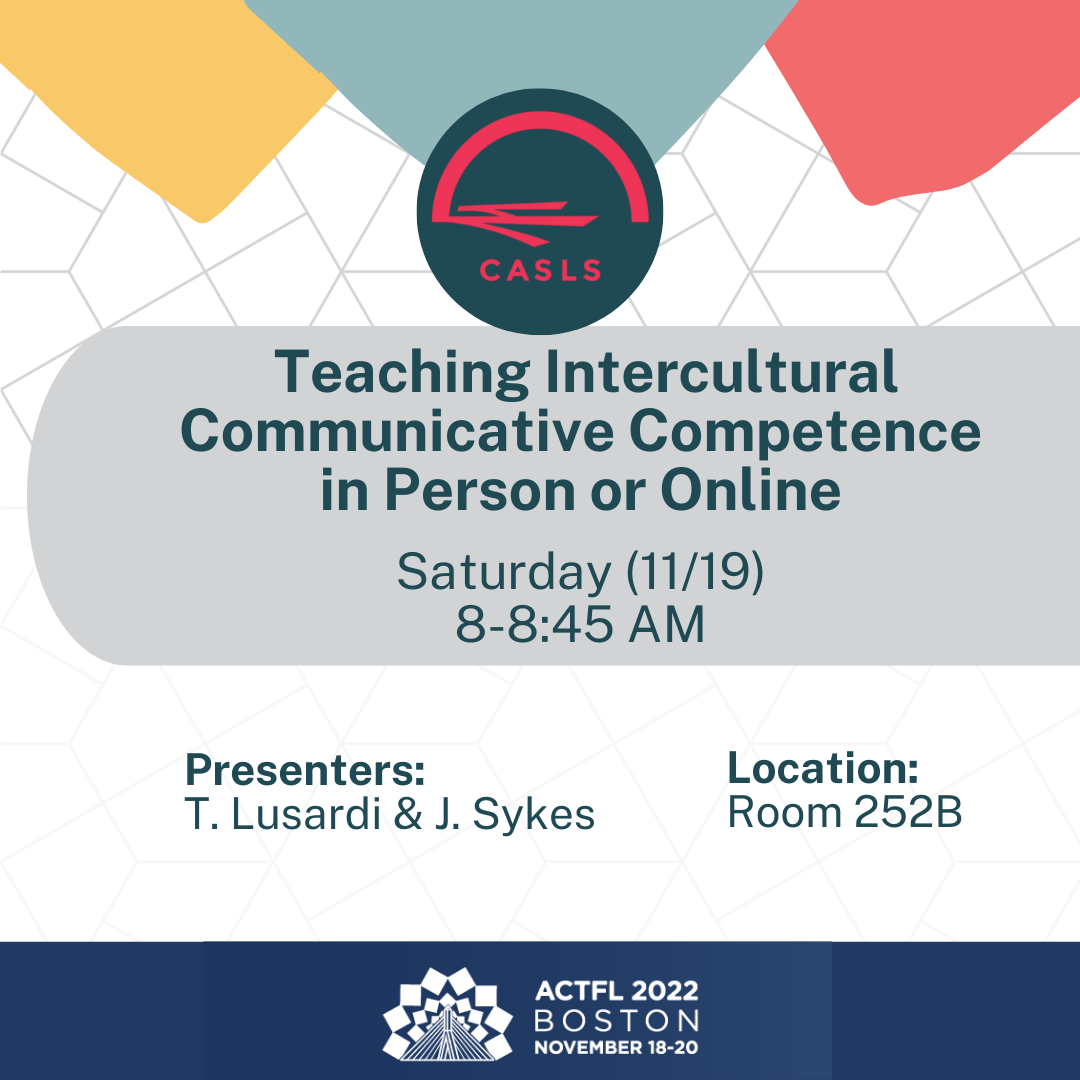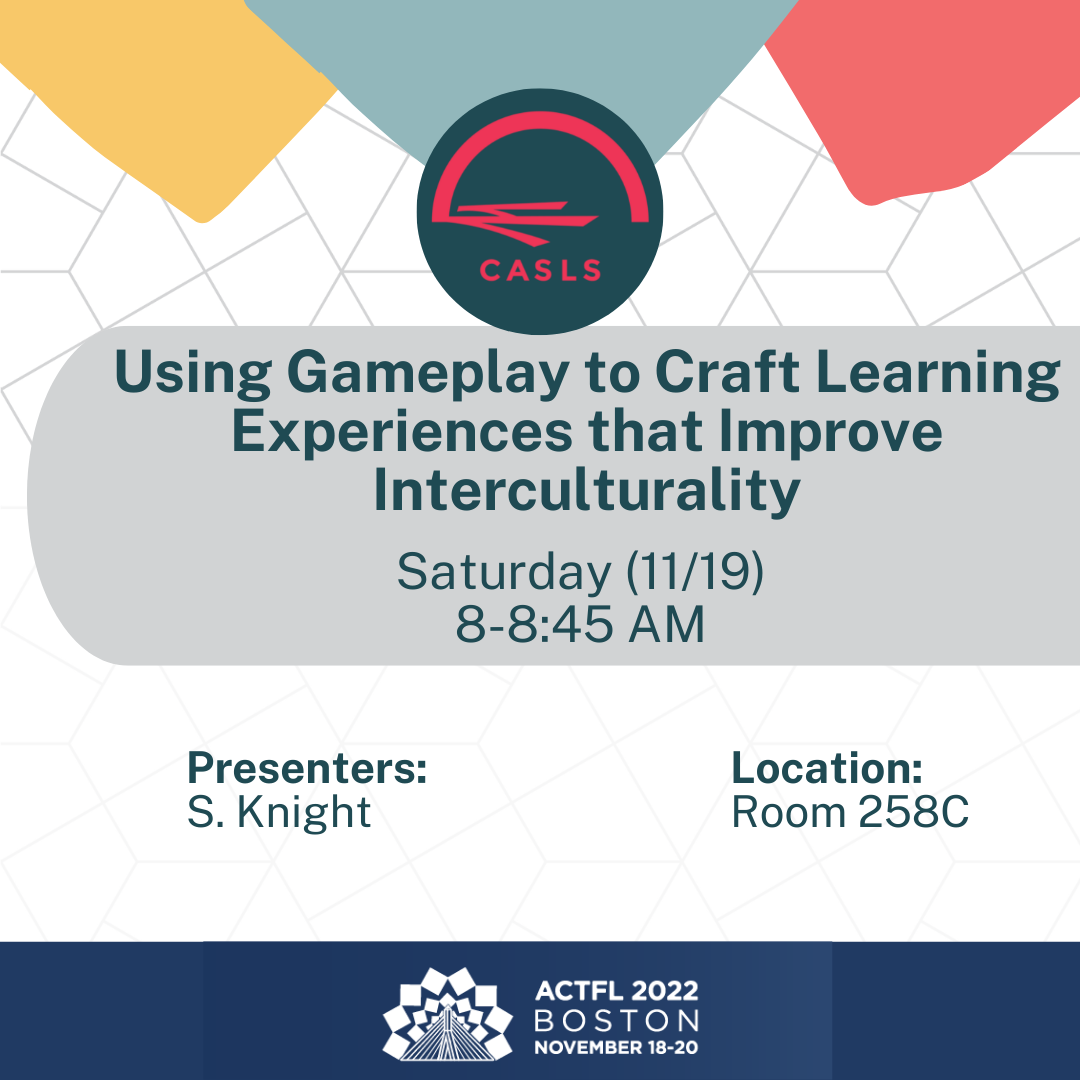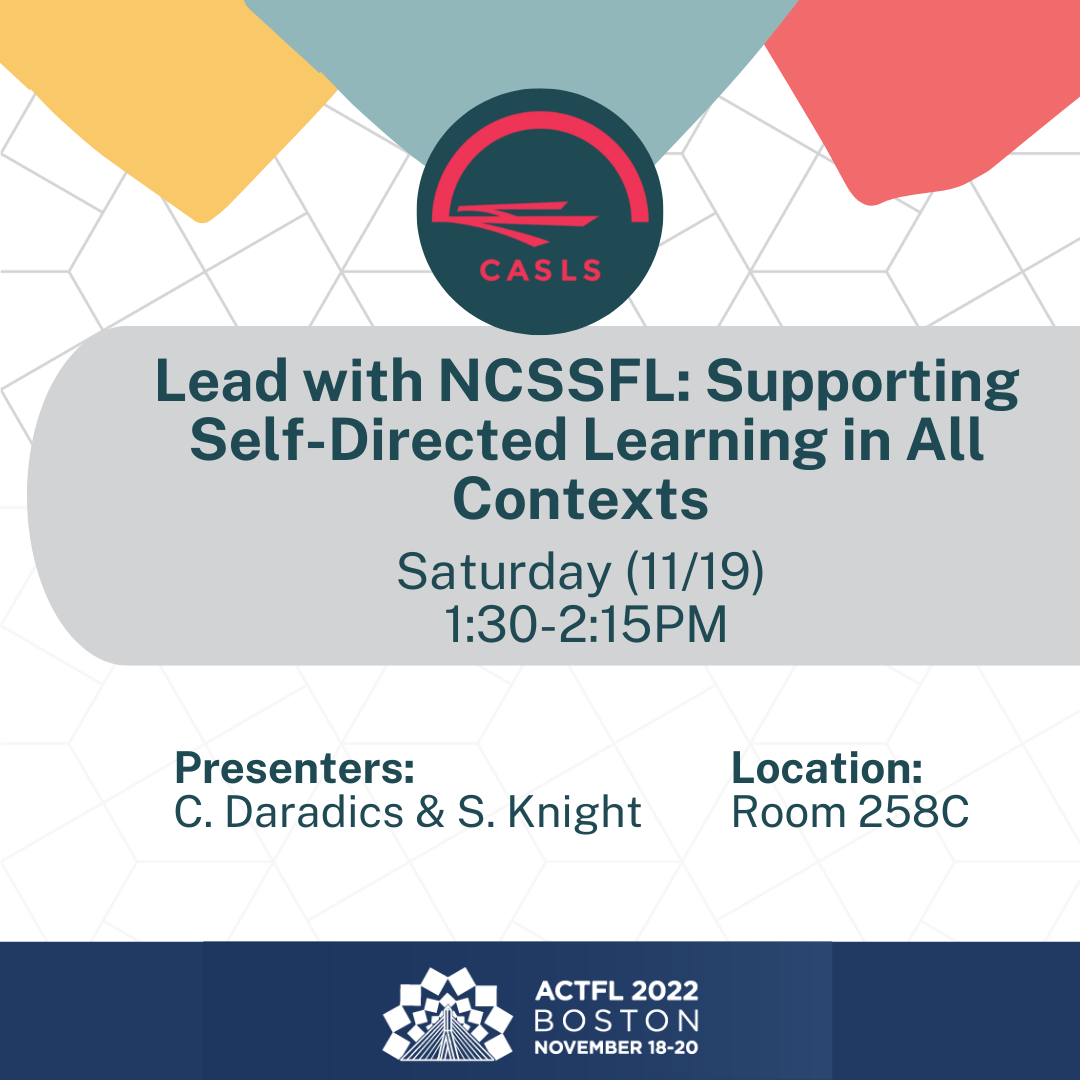Contents
Content Type: 1
Title: Immersive VR in the Development of Speaking Skills
Body:
From: https://fltmag.com/immersive-vr-in-the-development-of-speaking-skills/
This blog post explains the author’s use of virtual reality (VR) in a project-based learning module for upper-level Russian courses. Specifically, several VR-based speaking activities are highlighted given their capacity to improve time on task in the classroom. Teachers of all languages may find the example activities informative when developing their own work in VR.
Visit: https://fltmag.com/immersive-vr-in-the-development-of-speaking-skills/
Source: FLTMag, Olha Tytarenko
Inputdate: 2022-11-10 09:29:49
Lastmodifieddate: 2022-11-21 12:02:26
Expdate:
Publishdate: 2022-11-21 10:15:03
Displaydate: 2022-11-21 00:00:00
Active: 1
Emailed: 1
Isarchived: 0
Content Type: 1
Title: Signed Language Corpora
Body:
From: https://acadeafic.org/2022/10/27/signed-language-corpora/
Corpora are large-scale electronic databases of language that are used to examine various patterns of use. This vlog post introduces a book about signed language corpora and provides best practices for developing a corpus. It also identifies ways researchers may use corpora once developed.
Visit: https://acadeafic.org/2022/10/27/signed-language-corpora/
Source: Acadeafic
Inputdate: 2022-11-10 09:31:07
Lastmodifieddate: 2022-11-21 12:02:26
Expdate:
Publishdate: 2022-11-21 10:15:03
Displaydate: 2022-11-21 00:00:00
Active: 1
Emailed: 1
Isarchived: 0
Content Type: 1
Title: Exploring Images In and Out of Context
Body:
From: https://daily.jstor.org/exploring-images-in-and-out-of-context/
This blog post discusses how knowledge of the context of an image can radically change how a person interprets its subject matter and significance. It advocates for utilizing close looking strategies, or examining the image in detail and then hypothesizing the context and reason for the image. While this post is not written for the language learning classroom, it would be useful for those working with learners who are interpreting photos or documents of target culture products and practices, describing images in the target language, and building critical thinking and research skills.
Visit: https://daily.jstor.org/exploring-images-in-and-out-of-context/
Source: JSTOR Daily, Virginia Seymour
Inputdate: 2022-11-10 09:32:32
Lastmodifieddate: 2022-11-21 12:02:26
Expdate:
Publishdate: 2022-11-21 10:15:03
Displaydate: 2022-11-21 00:00:00
Active: 1
Emailed: 1
Isarchived: 0
Content Type: 1
Title: La inmensa imaginación del idioma español para crear palabras
Body:
From: https://www.fundeu.es/noticia/la-inmensa-imaginacion-del-idioma-espanol-para-crear-palabras/
This article in Spanish reviews Te cuento y no te acabo by Daniel Cotta Lobato, a professor of etymology. Around 100 Spanish words and their histories, including information about language contact, are explained throughout the book. This post would be useful for Spanish learners looking for an introduction to the origin, usage, and changes in meaning of Spanish words. The post would also be a beneficial exemplar to use in a genre study of book reviews.
Visit: https://www.fundeu.es/noticia/la-inmensa-imaginacion-del-idioma-espanol-para-crear-palabras/
Source: FundéuRAE, Álvaro Vega
Inputdate: 2022-11-11 07:34:54
Lastmodifieddate: 2022-11-28 12:01:51
Expdate:
Publishdate: 2022-11-28 10:15:03
Displaydate: 2022-11-28 00:00:00
Active: 1
Emailed: 1
Isarchived: 0
Content Type: 1
Title: TEFL Training Institute Podcast
Body:
From: https://www.tefltraininginstitute.com/podcast/
This podcast, which is released two or three times per month, features 15-minute-long interviews with teachers and researchers on a wide variety of topics related to English language teaching. Many of the newest episodes discuss learner motivation and engagement, focussing specifically on the needs of young learners (K-5). These episodes related to young learners include Independent Play in English with Very Young Learners (with Sandie Mourão), Encouraging Young Learners to be Creative (with Matt Courtois), and Learning to Learn with Children (with Gail Ellis). This resource would be especially useful for newer English teachers looking for ideas for building teaching skills, increasing learner engagement, and classroom management.
Visit: https://www.tefltraininginstitute.com/podcast/
Source: TEFL Training Institute
Inputdate: 2022-11-11 07:36:34
Lastmodifieddate: 2022-11-28 12:01:51
Expdate:
Publishdate: 2022-11-28 10:15:03
Displaydate: 2022-11-28 00:00:00
Active: 1
Emailed: 1
Isarchived: 0
Content Type: 1
Title: How to Study Chinese When You Don’t Feel Like It
Body:
From: https://www.hackingchinese.com/how-to-study-chinese-when-you-dont-feel-like-it/
This blog post suggests a variety of learner strategies for maintaining motivation when studying a language. These ideas include taking breaks, capitalizing on studying when one feels most motivated to do so, matching tasks to one’s attention and energy levels, and more. While the post is written with Chinese learners in mind, the suggestions given are relevant for any language learner, especially those who need to maintain motivation when studying independently.
Visit: https://www.hackingchinese.com/how-to-study-chinese-when-you-dont-feel-like-it/
Source: Hacking Chinese
Inputdate: 2022-11-11 07:38:48
Lastmodifieddate: 2022-11-28 12:01:51
Expdate:
Publishdate: 2022-11-28 10:15:03
Displaydate: 2022-11-28 00:00:00
Active: 1
Emailed: 1
Isarchived: 0
Content Type: 1
Title: Incorporating the Book “Nibi is Water” in an Early Elementary Spanish Class
Body:
In this blog post, the author discusses using Nibi is Water (Nibi aawon nbiish), an Ojibwe picture book that extolls the importance of protecting water, with young learners of Spanish. The post includes tips for providing cultural and background information about the book and Ojibwe culture. While the post is written with Spanish teachers in mind, its ideas could be easily adapted for teachers of any language, especially those interested in presenting multilingual materials.
Source: Fun for Spanish Teachers
Inputdate: 2022-11-11 07:42:59
Lastmodifieddate: 2022-11-28 12:01:51
Expdate:
Publishdate: 2022-11-28 10:15:03
Displaydate: 2022-11-28 00:00:00
Active: 1
Emailed: 1
Isarchived: 0
Content Type: 1
Title: Intersections of Race, Language, and Education: 8 Interviews With Scholars to Put in Your Ears
Body:
This blog post links to podcast interviews with eight language teaching scholars about intersections between race, language, and education. The list includes interviews about the devaluing of racialized linguistic varieties, how race affects bilingual learners' education, how the teaching of pronunciation is affected by race and accents, and more. In addition to being a useful resource for teacher learning and reflection, these podcasts would be helpful references for language learners interested in sociolinguisitics, specifically about how race affects language learning and learners' experiences in the classroom.
Source: TESOL Blog, Naashia Mohamed
Inputdate: 2022-11-11 07:49:06
Lastmodifieddate: 2022-11-28 12:01:51
Expdate:
Publishdate: 2022-11-28 10:15:03
Displaydate: 2022-11-28 00:00:00
Active: 1
Emailed: 1
Isarchived: 0
Content Type: 2
Title: Join CASLS at ACTFL 2022!
Body:
Coming to ACTFL 2022 in Boston this Friday-Sunday? Find CASLS at the National Language Resource Centers booth (#2327) to learn more about our resources for teachers and learners. Also, you can attend our presentations on Saturday!



Source: CASLS
Inputdate: 2022-11-11 08:04:46
Lastmodifieddate: 2022-11-14 13:08:33
Expdate:
Publishdate: 2022-11-14 10:15:02
Displaydate: 2022-11-14 00:00:00
Active: 1
Emailed: 1
Isarchived: 0
Content Type: 4
Title: Why Set Goals?
Body:
This lesson introduces language learners to the purpose goal setting. It walks learners through the reasons for setting goals, how to think through the steps needed to get to those goals. It is appropriate for all language learners, especially those just beginning with LinguaFolio, LinguaFolio Online, and the new resources offered by LinguaGrow.
Learning Outcomes:
Learners will be able to:
- Explain the purpose of setting goals
- Explain the differences between short-term and long-term goals, and how these two types of goals work together
Mode(s): Not applicable
Materials: EdApp Lesson
Procedure:
- Either individually or as a group, begin the EdApp lesson.
- As a group, watch the first four minutes and forty-four seconds (4:44) of the video segment featured on slide 3 of the lesson. This segment will discuss how goal setting helps learners focus on their chosen goal, pay less attention to failure, and ultimately learn more.
- Either individually or as a group, learners will complete the interactions in EdApp that follow the video segment.
- On Slide 6, have learners think about and write down each step (smaller goal) that would help them reach the end goal in the example given (buying a car). Learners can record their ideas in the EdApp module, or write them down elsewhere digitally or on paper.
- As a check for understanding after learners have reviewed Slide 9, ask them what the differences between short- and long-term goals are. What purpose does each of these types of goals serve? How do short- and long-term goals fit/work together when one wants to achieve something?
- Then, ask learners to identify how setting goals can help them learn. Review the summary slide (Slide 10) with them and ask them if they would add any ideas to the list on the slide.
Notes:
- Though this lesson is written with a synchronous learning context in mind, EdApp lessons are perfect for learner self-study. In lieu of introducing the lesson during instructional time, educators may prefer to have learners complete the lesson at their leisure.
- If learners will be using LinguaFolio Online (LFO) to set goals and track their progress, they can get started by watching videos to learn how to Sign Up for a LFO accounts, Log In to their accounts, and Update their account profiles.
Source: CASLS
Inputdate: 2022-11-11 09:39:38
Lastmodifieddate: 2022-11-14 13:04:51
Expdate:
Publishdate: 2022-11-14 10:15:02
Displaydate: 2022-11-14 00:00:00
Active: 1
Emailed: 1
Isarchived: 0
